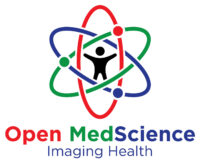Clean air is a cornerstone of maintaining safe, effective medical facilities—environments where patients often arrive with compromised immune systems or susceptible health conditions. In these settings, even minor lapses in air quality can lead to an increase in airborne diseases, cross-contamination, and complications in treatment outcomes. While many people think of surface cleanliness or sterilised instruments as the primary line of defence, the quality of the air that circulates in hospital wards, laboratories, and clinics is just as vital. The Centers for Disease Control and Prevention (CDC) underscores that controlling airborne contaminants is a crucial step in preventing infections. Medical professionals, scientists, and facility managers alike collaborate to develop and apply guidelines to keep the air free of pathogens, chemical vapours, and other particles that might impair patient recovery or endanger healthcare staff. Below, we look into the scientific rationale behind clean air in medical facilities, exploring how it influences patient care, staff health, and the broader goal of disease containment.
How Air Quality Affects Patient Outcomes
Air quality plays a pivotal role in patient outcomes, especially in surgical rooms, intensive care units (ICUs), and specialised wards like oncology or neonatal care. In these sensitive areas, patients may have weakened immune systems, making them more vulnerable to infections. If bacteria or viruses linger in the air, the risk of hospital-acquired infections (HAIs) climbs. Furthermore, certain contaminants—like mould spores or chemical residues—can trigger respiratory reactions or allergic responses that complicate treatment. Research published in clinical journals has shown that improved ventilation and filtration protocols have a direct correlation with decreased infection rates in critical-care units. Even slight improvements to airflow or filter standards can lead to measurable drops in post-surgical complications. By systematically removing particles and microorganisms that float through the air, healthcare facilities reduce the chance that patients will catch opportunistic diseases unrelated to their original condition. This doesn’t just enhance patient safety; it also lowers the burden on staff, who can then concentrate on essential care rather than responding to preventable infections.
The Science Behind Airborne Transmission
The principle of airborne disease transmission revolves around microscopic droplets or particles that can carry viruses, bacteria, or fungi. When someone coughs, sneezes, or even speaks, they release respiratory droplets of varying sizes. Larger droplets generally fall to surfaces quickly, while smaller aerosols remain suspended, potentially floating through HVAC systems or drifting around a room. In enclosed spaces—like a hospital ward with closed windows—these particles can linger or recirculate, increasing the odds they’ll reach another person. This is especially concerning when dealing with pathogens like tuberculosis bacteria or certain strains of influenza. In medical contexts, aerosol-generating procedures (e.g., intubation) produce more concentrated bursts of airborne particles. Unless captured or diluted effectively, these minute droplets spread rapidly among patients and staff. When combined with typical hospital foot traffic and complex ventilation layouts, the risk multiplies, underscoring why specialised engineering controls, such as negative pressure rooms, have become standard in high-risk departments.
Focus on Air Filtration Systems
Air filtration systems stand at the frontline of contaminant control in medical buildings. These setups typically rely on high-efficiency particulate air (HEPA) filters capable of trapping up to 99.97% of particles as small as 0.3 microns. In advanced units, multi-stage filtration might also feature activated carbon layers to neutralise chemical fumes or strong odours. Hospitals often integrate filtration with carefully mapped-out air circulation, ensuring that fresh, disinfected air flows into critical zones while “used” air exits through designated exhaust points. If an outbreak threatens or a ward handles, especially infectious cases, staff might temporarily upgrade or replace filter modules to ramp up protective measures. The underlying objective is twofold: reduce the buildup of harmful pathogens and maintain a neutral or slightly pressurised environment that discourages outside contaminants from seeping in. Coupled with diligent maintenance schedules—like quarterly filter checks—these systems enable consistent, predictable air quality that fosters healthier conditions for both patients and healthcare workers.
Essential Measures to Maintain Clean Air
Below is a concise set of tactics that hospitals and clinics can implement to keep air as free from pollutants and pathogens as possible:
- Routine HVAC Inspections: Confirm duct cleanliness and measure airflow rates to meet standard guidelines.
- Targeted Filtration Upgrades: Use high-grade filters (e.g., HEPA) in specialised wards to trap smaller pathogens.
- Regular Replacement Cycles: Switch out filters before they near the end of their functional lifespan.
- Air Pressure Zoning: Enforce negative or positive pressure in certain rooms to minimise cross-contamination.
- Monitoring Tools: Deploy sensors that detect particulate levels or relative humidity, warning staff when thresholds rise.
By combining these actions, a medical facility systematically lowers the chance that a stray bacterium, virus, or irritant can compromise patient health.
Real-World Consequences of Poor Air Quality
Conversely, neglecting these principles can lead to bleak outcomes. A hospital with poorly maintained vents might see spikes in hospital-acquired infections, from MRSA to fungal complications in immunocompromised wards. Staff also feel the impact: suboptimal air can aggravate respiratory conditions, fueling higher sick leave rates or even staff turnover. In clinics with inadequate humidity control, certain viruses remain viable for longer periods, elevating the risk of transmission. Moreover, chemical fumes—stemming from disinfectants or lab reagents—can accumulate, creating headaches or dizziness among frontline personnel. All of this contributes to a cycle of decreased trust in a facility’s ability to safeguard patient welfare. A negative event—like an outbreak clearly traced back to air quality failings—can be catastrophic in terms of public reputation, sometimes prompting official investigations or future budget cuts.
Linking Ventilation to Energy Efficiency
Some administrators hesitate to upgrade ventilation or filtration systems because of budget constraints, fearing the energy costs for running more powerful HVAC components. Ironically, modern solutions often promote both safety and efficiency. Advanced sensors can modulate airflow so that only the required volumes of air are processed when wards experience peak usage, balancing occupant needs with cost control. Heat recovery ventilators (HRVs) or energy recovery ventilators (ERVs) reclaim thermal energy from outgoing air to temper incoming fresh air, reducing heating or cooling loads. Because Arizona, for example, might have extreme heat, or northern states might wrestle with harsh winters, these reclaimed-energy setups help avoid massive utility bills. Furthermore, the U.S. Department of Energy has published guidelines indicating that well-designed HVAC improvements can cut operational costs by up to 20% in large facilities—an argument that even the tightest CFO might appreciate.
Psychological Benefits for Patients and Staff
While physical health stands paramount, mental and emotional dimensions also come into play when air quality is high. Fresh, clean-smelling air reduces the sense of claustrophobia or stress many feel during hospital stays. Paediatric wards often see calmer children when ventilation systems keep odours and stuffiness to a minimum. Meanwhile, staff morale edges upward when they’re not battling symptoms like itchy eyes, throat irritation, or mental fatigue caused by stuffy conditions. By contrast, an environment where employees routinely smell leftover antiseptics or stale air can foster subtle anxiety, impacting bedside manner and overall job satisfaction. Over time, intangible psychological boosts can yield real performance gains—nurses might show more patience, doctors better concentration during surgeries, and administrative staff clearer thinking.
Tapping into Authoritative Sources
For those seeking deeper technical insights into air management, the World Health Organization (WHO) provides extensive research on infection control in healthcare facilities. They emphasise a multi-barrier approach in which air cleaning complements hand hygiene, surface disinfection, and personal protective equipment (PPE). WHO guidelines detail how to measure air exchanges per hour for different ward types, verifying that air passes through enough filtration cycles to minimise pathogenic threats. By aligning with these recognised standards, clinics and hospitals not only demonstrate best-in-class care but also reduce legal or regulatory headaches down the road since compliance with international norms signals robust safety commitments.
Conclusion
The science underpinning clean air in medical facilities ranges from virology and fluid dynamics to mechanical engineering, but the mission remains singular: keep patients and staff safe while they heal and work. With proper ventilation, high-efficiency filtration, and responsible humidity control, hospitals mitigate airborne transmissions, reduce allergic reactions, and sustain an environment where patient recovery stands the best chance. An approach that marries top-tier technology with consistent maintenance—and is guided by frameworks from the WHO or local health authorities—lays the foundation for a hospital or clinic that upholds both ethical and professional standards. Ultimately, the effort poured into industrial-grade air cleaning within healthcare translates directly to improved patient outcomes, stronger morale among doctors and nurses, and a public image that reassures communities they’re in capable, conscientious hands.
Disclaimer:
This article is intended for informational purposes only and does not constitute medical, engineering, or legal advice. The content reflects the views of the authors at the time of publication and may not represent the most current developments in healthcare facility management or infection control. Readers should consult qualified professionals or relevant regulatory bodies before making decisions related to hospital air systems, filtration technologies, or clinical practices. Open MedScience does not accept liability for any loss, damage, or adverse outcomes resulting from the use or interpretation of the information presented in this article.




